The Ultimate Winter Fly Fishing Guide: Seven Tips & Flies for Success

Winter is a special time for fly fishing enthusiasts to experience quieter waters, crisp air, and the serene beauty of snow-dusted landscapes. While cold weather brings unique challenges, it also provides excellent opportunities to target trout feeding selectively in slower, chilled waters. With the right preparation and approach, winter can be one of the most rewarding seasons for fly fishing. To help you make the most of this magical time, we’ve compiled detailed tips and a selection of top-performing flies for winter trout fishing.
Tips for Winter Fly Fishing
1. Target Slow-Moving Water
In the cold, trout slow down and move to areas where they can conserve energy. Look for slow currents, deep pools, and eddies where the water flows gently. Tailouts and the inside bends of rivers are also great spots since trout don’t need to fight strong currents to hold position.
Pro Tip: Bring a thermometer. Water temperature plays a key role in fish behavior. Trout are most active when water temperatures are between 38°F and 45°F.
2. Perfect Your Presentation
Presentation is everything in winter. Trout feed less aggressively and won’t chase down a poorly presented fly. Your fly needs to drift naturally at the right depth. Use small, incremental mends to ensure a drag-free drift, and keep an eye on your strike indicator for even the subtlest movement.
Tips for Better Presentation:
- Add weight to your leader or tippet to get your fly deep enough to where trout are feeding. Split shot or weighted flies work well.
- Tight-line nymphing offers excellent control and keeps you in direct contact with your fly.
- For streamers, use a slow, deliberate retrieve that mimics the lethargic movement of prey in cold water.
3. Downsize Your Tippet & Flies
Winter’s clear, cold water demands a stealthy approach. Use fluorocarbon tippet in smaller sizes like 5X or 6X. Trout are more cautious in winter and can be spooked by thick tippet or clumsy casts.
Why Smaller Flies Matter:
During winter, aquatic insects like midges and small nymphs make up most of a trout's diet. Use flies in the size 18–22 range to match the small insects trout are feeding on.

4. Fish During the Warmest Parts of the Day
Unlike summer fishing, early mornings aren’t always the best time in winter. Instead, target the warmest part of the day—typically between 10 a.m. and 3 p.m.—when water temperatures rise slightly. Even a one or two-degree increase can make trout more active.
Pro Tip: On sunny days, focus on areas where the sun hits the water directly. Trout will move into these slightly warmer zones to feed.
5. Dress for Comfort & Safety
Staying warm and safe is essential. Hypothermia can sneak up quickly in cold, wet conditions. Wear layers, starting with a moisture-wicking base, followed by insulating layers, and finish with a waterproof outer shell.
Gear Tips for Winter Fishing:
- Insulated waders and thick, moisture-wicking socks are a must.
- Keep your hands warm with neoprene or waterproof gloves, and carry hand warmers.
- Bring a change of clothes in a dry bag in case you get wet.
Safety Tip: Be cautious around icy banks and submerged rocks. Use a wading staff to maintain balance, and avoid wading in fast currents.
6. Focus on Subsurface Patterns
While dry fly action is rare in winter, trout remain opportunistic feeders on midges, nymphs, and other subsurface insects. Focus on patterns that mimic small aquatic insects, eggs, and baitfish.
Fishing Tips for Subsurface Patterns:
- Use a two-fly rig with a weighted nymph or egg pattern as the point fly and a smaller midge or emerger as the dropper.
- Strike indicators can help detect subtle takes, but keep your leader long enough to get your flies down to the right depth.
7. Be Patient and Persistent
Winter fishing requires more patience than other seasons. You may cover a lot of water before finding active fish. Be methodical, and don’t rush your casts. Trout won’t move far to chase your fly, so work small sections thoroughly before moving on.
Pro Tip: Winter fishing is less about the number of fish you catch and more about the quality of the experience. Embrace the slower pace and enjoy the beauty of the season.

|

|
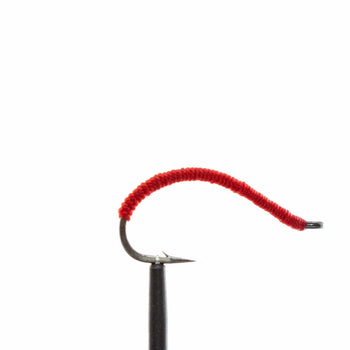
|
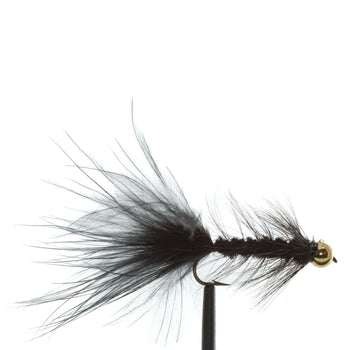
|
| Zebra Midge | Beadhead Pheasant Tail Nymph | San Juan Worm | Wooly Bugger |
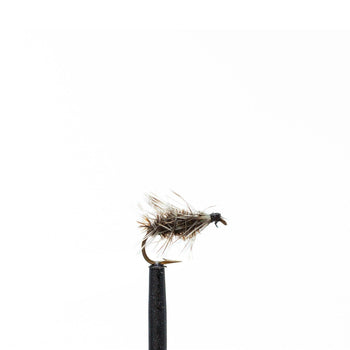
|
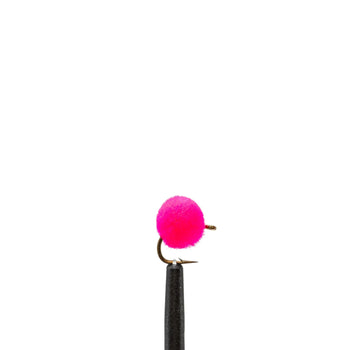
|
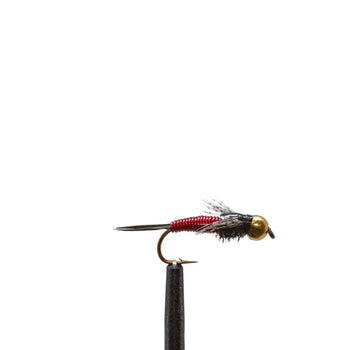
|
| Griffith’s Gnat | Egg Patterns | Copper John |
Top-Performing Winter Flies for Trout
1. Zebra Midge (Black or Red)
- Why It Works: Midges are the primary food source for trout in winter, and this simple pattern mimics them perfectly.
- How to Fish It: Drift it below an indicator or as part of a tandem rig.
2. Beadhead Pheasant Tail Nymph
- Why It Works: This versatile pattern imitates a range of aquatic insects, making it a winter staple.
- How to Fish It: Dead-drift it near the bottom with added weight.
- Why It Works: A go-to pattern for dislodged worms in winter’s slower currents.
- How to Fish It: Drift it through deep pools and seams.
4. Wooly Bugger (Black or Olive)
- Why It Works: Trout love the lifelike motion of this streamer, even in cold water.
- How to Fish It: Retrieve it slowly through deeper runs and pools.
- Why It Works: Perfect for those rare surface-feeding moments when trout are sipping midges.
- How to Fish It: Fish it as a dry fly or as part of a double-dry rig.
6. Egg Patterns (Pink or Chartreuse)
- Why It Works: Eggs are a high-protein meal and a favorite for winter trout.
- How to Fish It: Pair with a smaller nymph or midge.
7. Copper John (Red or Green)
- Why It Works: The beadhead and wire body make it an ideal pattern for winter’s low-light conditions.
- How to Fish It: Use as the lead fly in a nymph rig.
Final Thoughts
Winter fly fishing can be challenging but incredibly rewarding. With the right approach, gear, and fly selection, you can enjoy productive days on the water even in the coldest months. Remember, it’s not just about catching fish—it’s about embracing the solitude, natural beauty, and unique experience that winter fly fishing offers. Bundle up, adjust your tactics, and enjoy the serenity of winter fly fishing.







